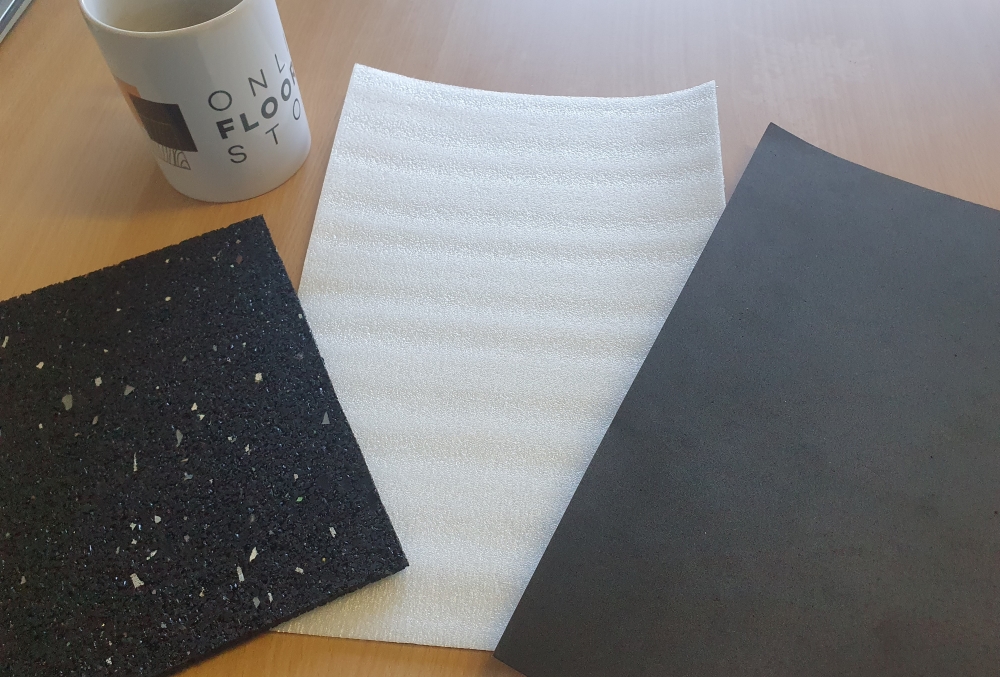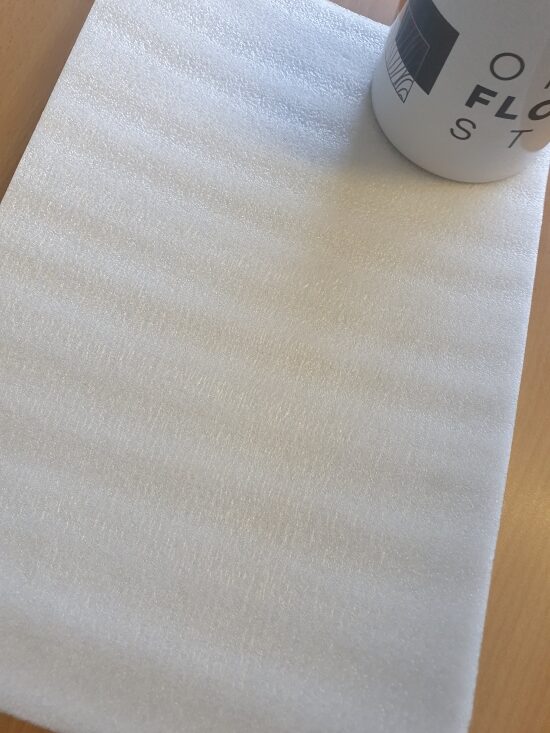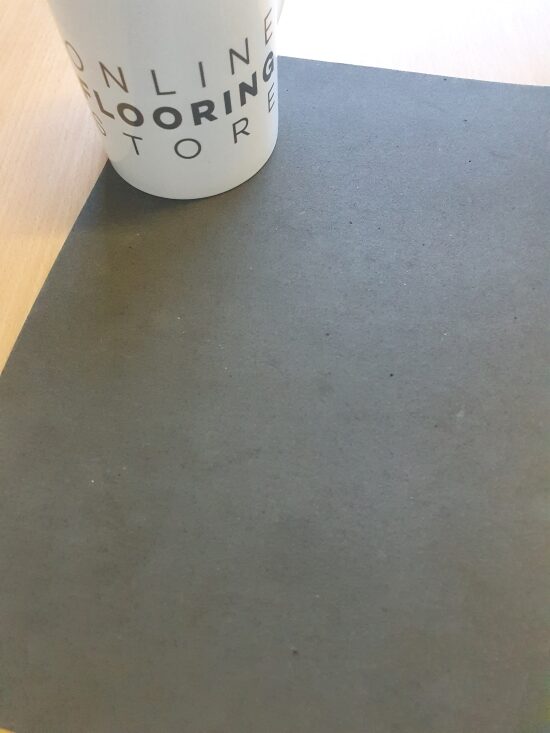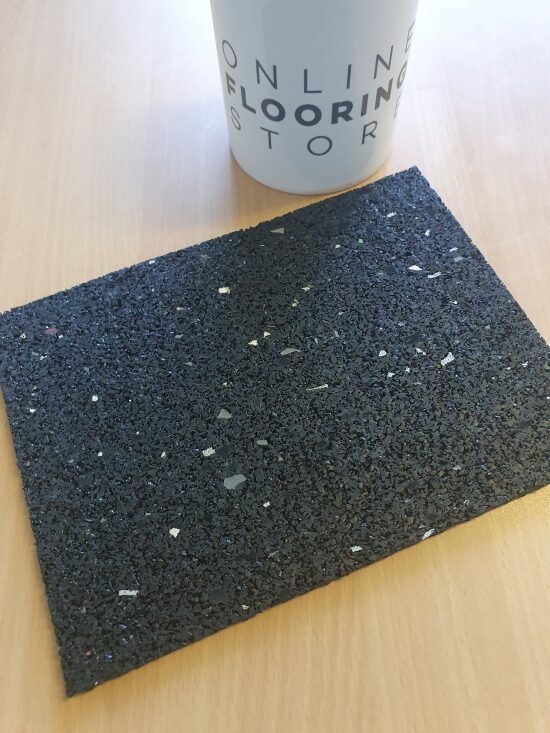When it is time to decide which underlay is best for your floating floor, you have three main options: open and closed cell foams, and rubber underlays.
This blog aims to help you make a sensible decision that will give your project a satisfying result. To achieve the purpose, we will provide you with the differences between these underlay types, along with their pros and cons.
Let’s begin.
First, we’ll have a look at what these products are:
What is Open Cell Foam?
Open Cell is a type of foam that is rubber-like and made by adding an inflating agent. Typically, this is sodium bicarbonate, although some manufacturers also use similar agents. With the inflating agent incorporated into the rubber compound, gas is emitted, further expanding the rubber during the vulcanisation process.
More often than not, foam is generally an “open-cell” where most cells are open (hence the name).
Some examples of open-cell materials are:
- Reticulated foam
- Open-cell rubber
- Polyurethane foam
Open-cell foam is the lightest and cheapest floating floor underlay option, often at around 20kg per m3 in density. This means that a block of this foam that is 1m x 1m x 1m will weigh around 20kg.
What is Closed Cell Foam?
As the name suggests, Closed Cell Foam has cells that are completely closed with the walls preventing interconnection with one another. Closed-cell foam uses a particular type of gas (usually nitrogen) in which the rubber is subjected to high pressure. In some cases, the foam is manufactured by incorporating materials that form gases into the existing rubber compound.
Some examples of closed-cell foam are:
- Neoprene
- EPDM
- EPDM/CR//SBR
- PVC/NBR
Closed-cell foam is the most popular hard flooring underlay, as it strikes the balance point between cost and performance. In the Australian market today, closed-cell foam underlays range from 33kg to 200kg per m2 in density
What is Rubber Flooring Underlay For Hard Floors?
Rubber Flooring Underlay for hard floors is in most cases made from recycled, shredded rubber that is reconstituted into blocks of rubber and then cut into sheets or rolls. Quite often the product is made from old car tyres, so it is giving what is a waste product a second life.
In some cases, manufacturers may make a cork/rubber mix, and while each company that sells either a rubber or cork/rubber underlay will sing the virtues of their product, in real performance terms, there is little that differentiates them.
Rubber hard flooring underlay is the heaviest and most expensive type of hard flooring underlay and can be anywhere from 400kg to over 1000kg per m3 in density. While we often think bigger is better, do not let this number take too much of your attention, as it attenuates in a different way to foam underlay.
It does however have one advantage over the other 2 foam underlay types.
Comparing Foam Underlays: Open Cell vs Closed Call vs Rubber
In real terms, what underlay should you use? There is a lot of smoke and mirrors in the area of acoustics in flooring, and quite often, suppliers publish ‘site’ test results when citing their ratings, where these are not ‘true’ tests.
To have a ‘true’ test, it must be conducted in a vertical test lab, and list the slab thickness, underlay type(s) used in the test, and importantly, whether there is a suspended ceiling underneath the floor being tested. If so, then the test needs to give us the air cavity provided by this ceiling, whether there is acoustic infill if isolated ceiling hangers are used, and if so are they rubber or spring.
I could go on, but it is time to stop.
Many test results provided simply do not give you any of this information. Nor in most cases is it important unless you live in a high rise situation. If you are putting a floor in your own home, then LnTw and FIIC ratings mean nothing to you. You just need to know how it performs. In a previous company, I spent several years working in Structure Borne Noise Isolation, which is just a fancy way of saying ‘I stopped noise travelling in buildings’.
Broken down in simple terms:
- In cost, open-cell foam is the cheapest and can be half the price of closed-cell foam. Closed-cell foam comes in next, but then there is a long gap, and rubber comes in last. Rubber can be up to 10 times the price of open-cell foam underlay. There is a reason for this which we will cover below.
- In performance, this is reversed. Rubber underlay will last many times the floor. Closed-cell foam will last at least the life of the floor. Open-cell foam rarely lasts the life of the floor.
- For Airborne Noise Transmission (the sound you hear as you walk around on the floor,) the denser the underlay the better. Rubber and dense closed-cell foams are the best here. Closed-cell foam quickly deteriorates and provides little benefit over time.
- For Structure Borne Noise transmission (the sound other the people who live underneath you hear,) oddly, it is the lighter weight closed cell foam that is the best. Rubber and higher-density closed-cell foams all perform differently depending on the weight of the floor on top of them. Open-cell foam performs poorly.
- If you want to direct stick a timber floor and want to use an underlay, then the only option is Rubber underlay. This uses a process called ‘Dual Bonding’ whereby the underlay is stuck using flooring adhesive, and once this has been set, the timber is then glued to this. You cannot dual bond (or single bond,) foam hard flooring underlays.
- For Insulation, closed-cell foam is the best choice. Open-cell foam has air bubbles in the product and rubber underlay has gaps between the rubber fibres.

Expert Insights From Dean Billett
28+ Years of flooring industry experience
With solid timber floors due to moisture issues, it has become more popular to use a 10mm - 12mm structural ply between the concrete slab and wood flooring and glue the timber to that instead of the concrete. This also, in turn, keeps the floor very level.
I always recommend good quality closed-cell foam when laying engineered timber floors.
What Is the Best Floor Underlayment?
In the great majority of cases, Closed Cell Foam is going to be the winner here for most people. It strikes the balance between performance and price and punches well above its weight. If you are looking for an option that will sound better in your home, then you will want to consider the ‘Acoustic’ underlay. This is just a more dense version of closed-cell foam, but this additional density helps to deaden the sound of a floating floor.
However, if you are in an apartment block, then you want to look at a lighter weight closed-cell foam. This is because the weight of the floor allows the product to compress more (not flatten like open-cell foam,) which reduces the vibrational energy that transfers into the floor below. Heavier weight underlays are too ‘stiff’ in this regard, as they do not compress enough, and vibrational energy passes through them more easily.
If you are wanting to direct stick a floor, the only option that you have is the Rubber underlay. Ensure that you use an adhesive that is ‘Solvent Free’, as the solvent can affect the integrity of the rubber and cause it to break down. Rubber underlay will outlive the floor you put on top of it. While this may sound wonderful, a well-closed cell foam will at least outlive you. Therefore, for the vast majority of cases, closed-cell foam is the product of choice.
In the interest of full disclosure, I never, promote open-cell foam underlay to anyone ever! Open-cell foam does not cost that much less than closed-cell foam, but it has nothing like the performance. It is simply just not worth it. Even if you are putting in a floor in a house you are going to sell, it is just not the right option, and the saving in dollar terms just does not represent value
Do you have any questions about the underlay for your new hard floor? Contact Online Flooring Store for the best advice to get you started.






